Why Do Men's Eyebrows Get Lighter, and Does It Matter?
Not every guy starts off with strong, bold brows. Some men have eyebrows so faint you can't see them in photos, while others notice that their brows start to fade as they age. This isn't random; it's tied to a mix of genetics, lifestyle, sun exposure, and even hormonal changes. The hair on your face can lose color just like the hair on your head. If you've spent hours outside playing sports or working, UV rays actually bleach eyebrow hair over time. In fact, dermatologists confirm that constant sun exposure is a major cause of lighter brows for men, especially those with naturally light or thin hair.
Then there's the issue of hormones. As men get older, particularly after 40, testosterone levels can drop, which sometimes causes hair—including brows—to get finer and lighter. Sometimes it's just plain genetics, and you've had barely-there brows since you were a teenager. Ever see those side-by-side 'before and after' brow pics online? There's always a reason for dramatic differences, and a lot of it isn't just about lighting or filters.
Is it silly to care about eyebrow color? Not really. Your brows frame your eyes and can change how confident or youthful you look. Some guys notice people forget their names but remember their intense brown eyes and brows. There's even data from image consultants showing that men with defined brows often seem more expressive, trustworthy, or assertive in social settings. It's not about vanity—if having darker brows makes you feel better, that's reason enough to look for a fix.
So if you want to darken your brows without diving into makeup—no pencils or powders—you're not alone, and plenty of options are out there.
Everyday Habits That Help Darken Eyebrows Naturally
There's a myth that nothing but dye or makeup will change brow color, but small changes in your daily habits can offer noticeable differences over time. Let’s bust through what really works. First, avoid over-plucking or overly aggressive grooming. The thinner and sparser your brows, the paler they look—so ditch the tweezers or waxing and let your natural shape grow in. Thicker brows cast more shadow and stand out, even if each hair is light.
What you eat plays a role too. Eyebrow hair needs the same building blocks as your scalp: protein, iron, B-vitamins, biotin, and healthy fats. If you're skimping on eggs, fish, nuts, or leafy greens, your brow hair may not grow in as dark and strong as it could. Try adding more omega-3s and zinc—for example, a handful of walnuts or pumpkin seeds daily can make a noticeable difference. Even a small iron deficiency is known to make brows and lashes subtly lighter.
Using sunscreen on your face doesn't just protect against skin cancer; it keeps brow hairs from getting bleached. Choose a sheer, lightweight SPF and gently pat it onto your brow area. If you cycle, run, or work outside, get in the habit of using a hat or sunglasses with a brow-bar to block direct sunlight. It’s one of those tips people love to roll their eyes at—until they check their old selfies and spot the difference.
Another key habit is avoiding harsh soaps or facial scrubs. Harsh cleansers can rob hair of natural oils, making it look lighter and shinier. Try a gentle cleanser and pat—don’t rub—your face dry. And if you shower with super-hot water, cool it down. Hot water opens the cuticle of each hair, which makes the darker pigment inside the hair shaft fade faster over time.
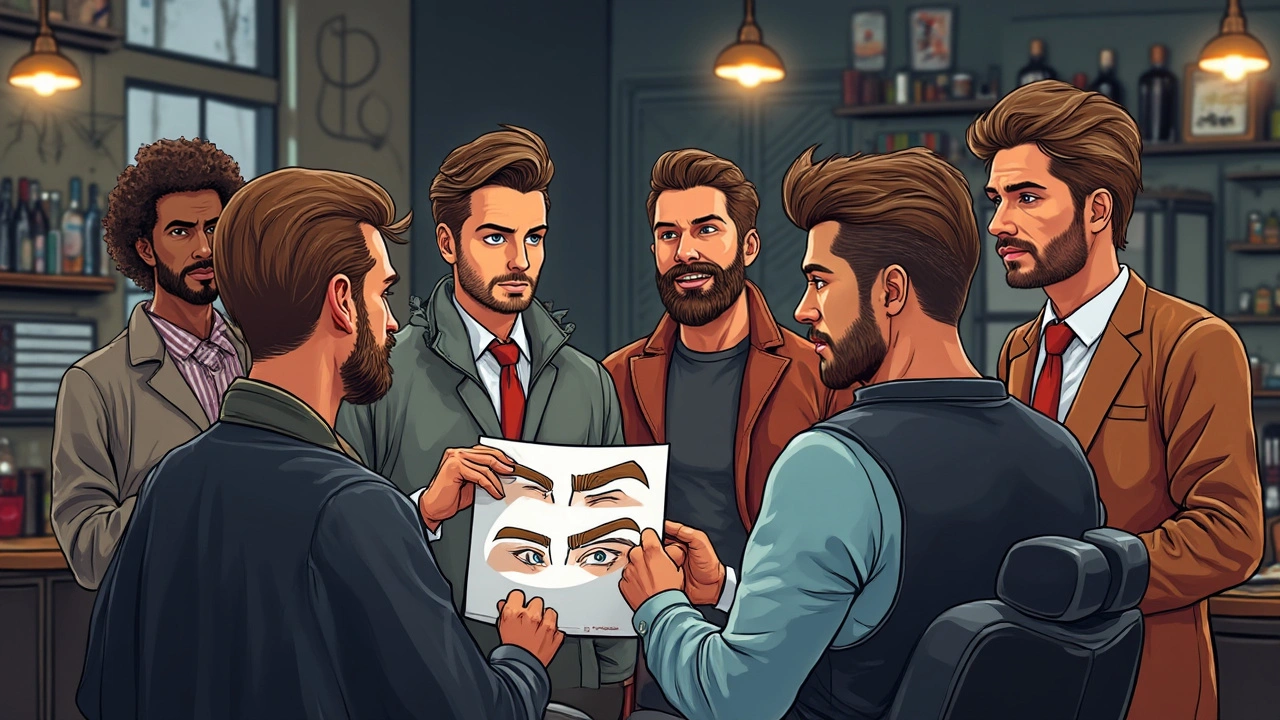
Natural Oils and DIY Solutions: What Actually Works?
The internet is full of bold 'miracle' claims for oils and homemade brow concoctions. Some are nonsense—but a few methods do show some real promise, backed by science or at least by decades of tradition. Castor oil is the MVP here. It contains ricinoleic acid, known to support hair growth. Thousands of men and women swear by it, and some studies suggest it really can help hair grow thicker and look darker by making strands more robust. Just dip a cotton swab in 100% pure castor oil and brush it over your brows every night; it takes a month or more, but you can see results if you're consistent.
Coconut oil also gets some praise, mainly because it prevents protein loss in hair and creates a glossier, darker look by smoothing cuticles. Olive oil, too, is rich in vitamin E and antioxidants, which help keep hair follicles healthy. You don't need to drown your face—just massage a tiny amount into your brows before bed and wash it off in the morning.
Here's a quirky one—onion juice. Before you gag, know that onion juice is packed with sulfur, a natural building block for hair. Some small studies have shown it can boost overall hair health and fullness. Just mix onion juice with coconut oil, dab it on with a cotton ball, and wash it off after 10 minutes. The smell is rough, but it's temporary.
If you want to try something a little less intense, aloe vera can give brows a fuller look. Aloe isn't a dye, but it helps strengthen hair and lock in moisture, which makes it seem darker and shinier under light. Bonus: none of these DIYs involve chemicals or permanent changes, so if you mess up, all you have to do is stop and let your brows return to normal.
What should you skip? Lemon juice may lighten brow hairs so avoid any masks or home remedies that include it. Same for hydrogen peroxide or harsh soaps—these can actually bleach facial hair and dry out the skin underneath.
Brow Tinting and Dye: The Semi-Permanent Route
If patience isn’t your thing or natural methods aren’t cutting it, brow tinting might sound appealing. Dyeing your brows with a semi-permanent tint is safe when done professionally, and it works for several weeks at a time. Salons use vegetable-based tints, not harsh hair dye, so it’s less likely to irritate your skin. The process is simple: a tech applies the tint, lets it sit for 10-20 minutes, and you rinse. You’ll walk out with bold, defined brows that match or slightly deepen your natural shade.
Is DIY brow tinting at home a good idea? Kits exist, but you have to be careful. The skin around your eyes is sensitive. If you get dye in your eye, it stings—badly. Always do a patch test and follow instructions to the letter. Some men use Just For Men beard color or similar products designed for facial hair, applying them lightly with a fine brush. Be strategic: use a timer, and never leave dye on longer than recommended.
You might worry about your brows looking too dark, especially if you have pale skin. Start with a shade that’s just a touch deeper than your hair color, not black unless your hair is naturally jet-black. Most coloring mishaps happen when guys go too dark in one go. And remember, tints fade a bit each time you wash your face or shower, so even if you think it’s a bit much after the first try, it’ll soften in a week or two.
According to skin expert Dr. Jessica Wu, “Vegetable or semi-permanent brow tints are a good option for those looking for a safe, hassle-free way to enhance eyebrow color without the drawbacks of makeup.”
“Just be careful to avoid products with coal tar or PPD (paraphenylenediamine), as some people have strong allergic reactions,”she adds.
Want to keep it low-effort? Tinting only needs to be repeated about once a month. Some guys hit the salon every few weeks, while others use at-home touchup kits. Either way, tinting is game-changing if you're after results right away.
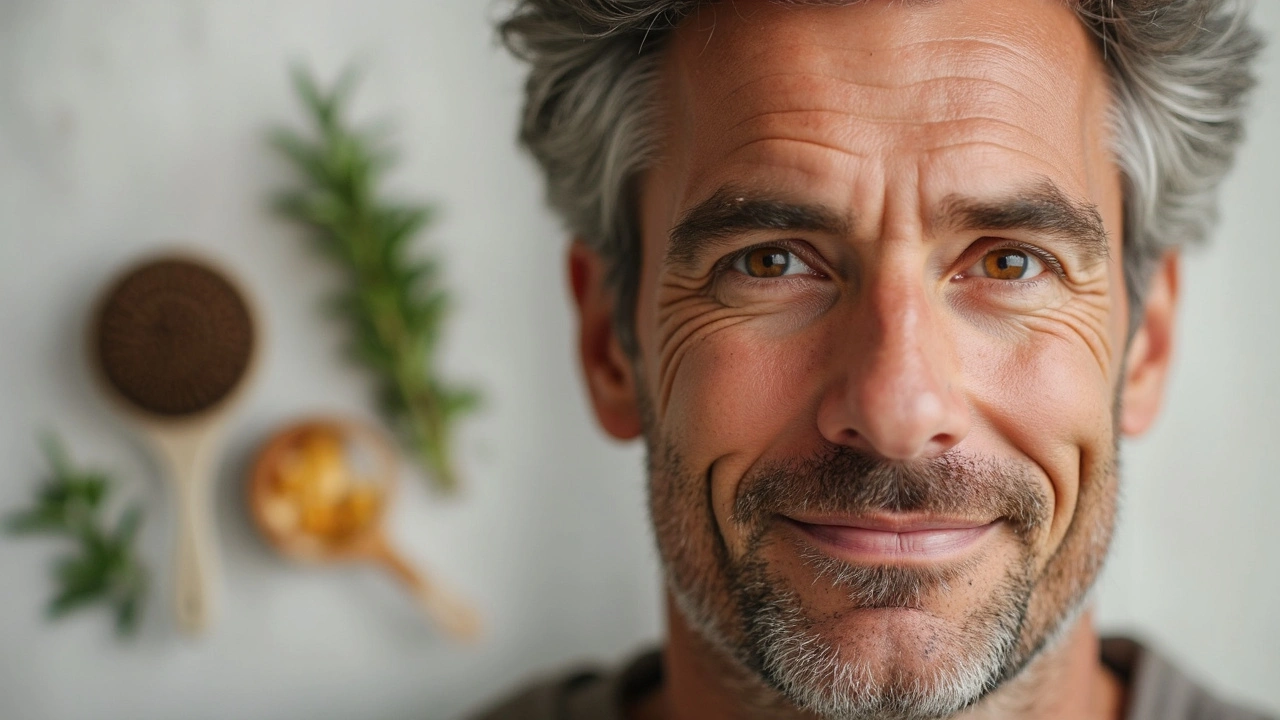
Brow Growth Serums and Supplements: Do They Really Work?
Brow growth serums are everywhere, promising thicker, darker brows with a swipe a day. Some actually deliver, but you have to check the main ingredient. The most effective on the market use peptides or botanical extracts that condition hair, making it appear naturally fuller and a tad darker. Prescription serums like bimatoprost (the active ingredient in Latisse) have been proven in clinical studies to stimulate longer, denser hair growth. However, these are usually expensive, require a doctor’s Rx, and can take months before you see true results.
Lots of OTC brow serums boast peptides, biotin, and plant extracts like saw palmetto and rosemary. They won’t give you movie-star brows overnight, but with daily use, you might notice more fullness and a richer hue. These can especially help if your brows are weak due to overplucking or stress. Some brands also tint the brow hair slightly as they condition, giving you a subtle but visible effect.
If you prefer to work from the inside out, supplements can make a difference, especially if you're lacking certain vitamins. Biotin, zinc, and vitamin D get the most hype. A study in the Journal of Dermatology reported that a daily dose of biotin led to a 40% visible improvement in hair quality over three months, and the effect included facial hair like brows.
But don't think a pill fixes everything. Supplements only help if your body’s short on those compounds already. Overdoing it with megadoses of biotin or vitamin A can actually cause new problems—like breakouts or weird hair growth in spots you don’t want. If you’re unsure, get a blood test or ask your doctor before starting any new regimen.
| Product | Key Ingredient | Results Seen | Side Effects |
|---|---|---|---|
| Latisse | Bimatoprost | 8-12 weeks | Possible skin irritation |
| OTC Serums | Peptides, botanical extracts | 1-3 months | Minimal |
| Biotin Supplements | Biotin (Vitamin B7) | 3-6 months | Rarely: acne, digestive upset |
Always research or read reviews before spending big bucks on a serum or supplement. Not all are worth it—but when you hit the right one, the difference can be seriously noticeable, especially with daily use and good habits.

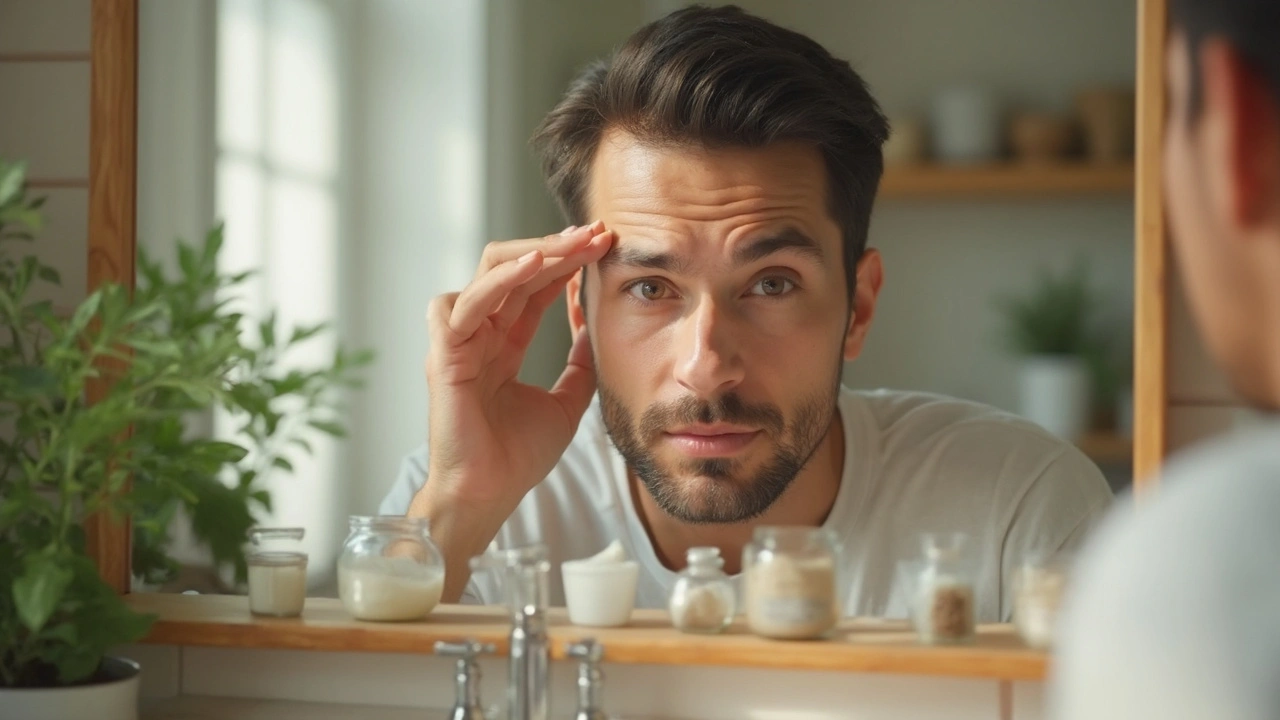
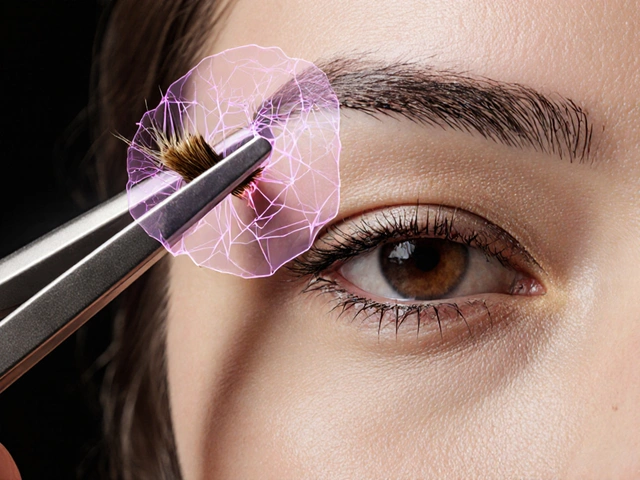


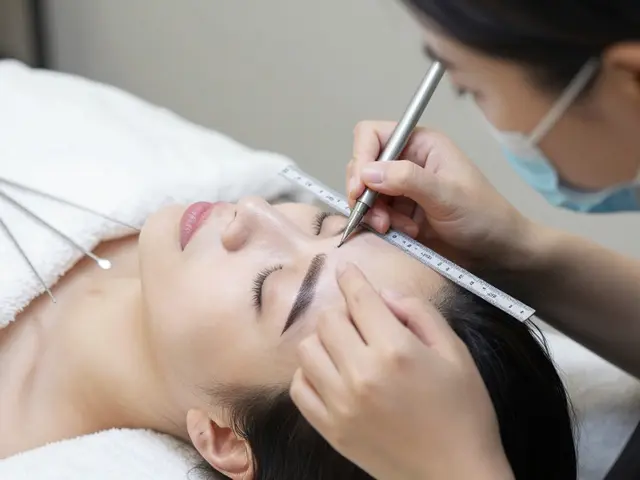
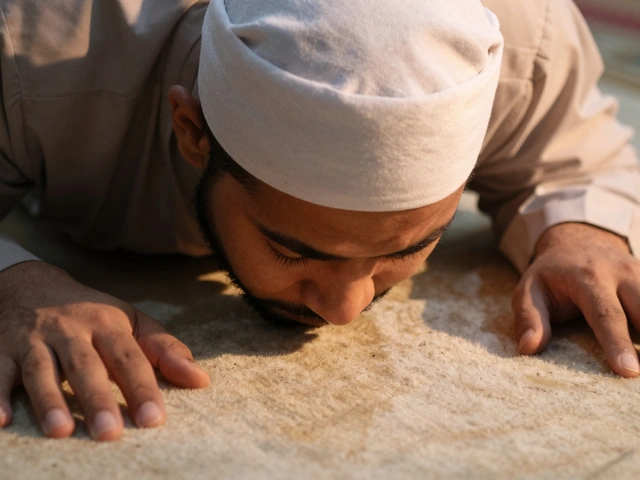
Peter Reynolds
July 18, 2025 AT 02:53This post actually hits on something I've been curious about for a while. I've got pretty light eyebrows naturally, and rather than going the makeup route, I've been looking for legit natural methods to darken them a bit. I appreciate the mix of home remedies and salon treatments here because it gives some flexibility depending on how intense you want to go.
I'd also like to know if any of the natural oils you mentioned have any risks for irritated skin? That’s a concern for me since I have sensitive skin around my eyebrows.
On top of that, the tips on avoiding damage to keep them healthy were nice to see. Often people just focus on darkening but skip out on the health of the hair which is crucial for a natural look. A balanced approach is necessary.
Fred Edwords
July 18, 2025 AT 07:03Excellent guide! I must say, the distinction you made between what actually works and what could be dangerous is very valuable. Many people do not realize that some DIY eyebrow darkening methods can actually harm the hair or skin. For example, using raw henna improperly could cause allergic reactions or staining of the skin in an unnatural manner.
I also appreciated the detailed exploration of salon treatments. It’s important for users to understand the permanence and care requirements involved in procedures like tinting or microblading.
One small suggestion — adding a short section about patch testing before trying any new product might save many people from uncomfortable surprises.
Sarah McWhirter
July 18, 2025 AT 10:23Oh sure, they tell you these "natural methods" are safe, but has anyone really thought about what’s in those so-called 'oils' and 'home remedies'? Because I highly doubt it’s as innocent as they want you to believe.
I mean, look at how beauty companies are always pushing products that supposedly 'nourish' yet hide who-knows-what in them. And salon treatments? Probably just another way to lure you in and make you depend on their expensive chemicals in disguise.
Just sayin’, it’s worth questioning what the real agenda is behind these tips. Are we really getting healthier brows, or just lining the pockets of the beauty industry?
Ananya Sharma
July 19, 2025 AT 06:40Actually, I find it troubling that so many men feel pressured to alter their natural features, even subtly, like darkening their eyebrows. This suggests a societal obsession with artificial beauty standards that we ought to critically examine. Why valorize darker, fuller brows as inherently better? Implicit messages like this reinforce conformity at the expense of individuality.
Further, the 'natural' methods promoted often masquerade as saviors without acknowledging the environmental or nutritional factors affecting one’s hair pigmentation. It’s far too reductionist to suggest topical applications can compensate for these broader health concerns.
We need more context-driven advice rather than quick fixes that perpetuate superficial changes instead of fostering genuine self-acceptance.
kelvin kind
July 20, 2025 AT 10:26Hey, I just tried some of the castor oil method mentioned here. After about three weeks of consistent application, I’m seeing a subtle darkening and maybe a bit more fullness too. Nothing dramatic, but enough to notice without anyone else really pointing it out.
That said, it takes patience. I’d warn people not to expect overnight results. Also, keep an eye on any irritation; always test on a small patch first.
Overall, a decent approach if you’re into a slower, natural improvement without diving into salon stuff.
Ian Cassidy
July 21, 2025 AT 14:13Fascinating breakdown of remedies versus salon techniques for eyebrow enhancement, honestly. I want to geek out on the biochemistry a bit — castor oil’s ricinoleic acid promotes circulation which could help follicle health, thus darker and thicker growth over time. Similarly, henna’s staining effect provides a semi-permanent coloration by chemically binding to keratin.
Yet, the long-term impact of repeated applications isn't widely studied, so it's prudent to proceed with measured caution. There’s always a tradeoff between efficacy and safety when using bioactive compounds.
If anyone has experience with microblading beneath these natural options, I’d be curious about the maintenance timeline and risks involved.
Zach Beggs
July 22, 2025 AT 18:00I appreciate the post’s straightforward tone about what works and what doesn’t. Too often we see clickbait promising instant 'bold brows' with little effort, which is misleading. It's refreshing to have realistic expectations set around natural or semi-permanent methods.
It would be great if the article also discussed how diet or supplements — like biotin or vitamin E — could support eyebrow health holistically, since that’s an underappreciated piece of the puzzle.
Anyway, thumbs up for encouraging healthy maintenance alongside aesthetic goals.
Kenny Stockman
July 25, 2025 AT 01:33Just chiming in here as someone who's coached a few guys wanting to step up their grooming game, including eyebrows. From what I've seen, the best results combine some home-care consistency (castor oil or coconut oil) with occasional professional touch-ups if you want semi-permanence without makeup.
Don’t forget, the shape and grooming go hand in hand with color. You can darken brows, but if the shape is off, it’s just gonna look weird. So think about the whole package.
Also, keep expectations realistic, especially if you’re starting with really light or sparse brows — natural improvement is subtle but worth it.
Antonio Hunter
July 26, 2025 AT 05:20Reflecting on this topic from a more philosophical angle, it’s interesting how something as seemingly trivial as eyebrow color intersects with identity and masculinity norms. The pressure to maintain a curated yet authentic look is tricky. The article provides a practical toolkit for men wanting enhancement without vanity, which is a balance many struggle with.
Still, there’s value in reminding readers that confidence comes from self-acceptance first, with any external grooming as a complement. The guidance on avoiding harm respects personal well-being beyond aesthetics, which is encouraging.
I’d be curious about cultural differences in eyebrow ideals and how natural methods are perceived globally.
Paritosh Bhagat
July 27, 2025 AT 09:06While I get the desire for darker, fuller eyebrows, I gotta say a lot of these 'natural' treatments sound like convenient myths that might be pushing folks into unnecessary routines. It’s not just about appearance — the obsession with changing natural features can lead to a slippery slope of dissatisfaction and excessive self-criticism.
Plus, some suggested remedies can cause allergic reactions or damage. The article’s warnings are good but sometimes the information gets lost in the appeal of quick fixes.
Personally, I think everyone should just embrace their natural look unless there’s a medical reason or personal conviction otherwise. Less pressure, more peace.